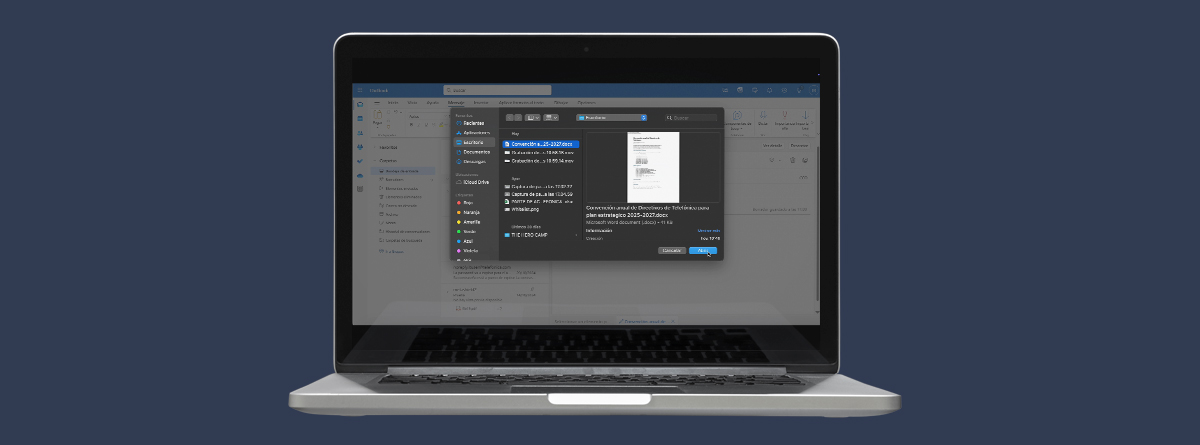How can I detect suspicious activity on my digital accounts or profiles?
Share

Suppose you suddenly receive notifications of changes in your social media accounts that you don’t remember you made, you see emails marked as read when you haven’t opened them yet, or worse, you find posts that you never even made. Sound familiar?
It is an unsettling and very unpleasant feeling. It’s as if someone is rummaging in your digital life without your permission and, on top of that, you realise it too late. These days, protecting our online accounts is just as important as securing our front door. We would never go outside without locking the door and making sure we have the keys in our pocket. We think that switching off our mobile phone and/or closing the tabs we open daily, is enough to keep cybercriminals at bay. What we don’t realise is that, by doing so, we have only managed to close the door a little or draw a curtain, assuming that this is enough to keep cybercriminals out.
Here are some tips and advice on how to identify suspicious activity and how TU Latch can be your best ally in doing so.
How do I know if someone is accessing my account?
There are many risks on the Internet, and we are gradually finding ways to counter them. Here are some ways and steps you can take to start finding out about unwanted access to your accounts.
You cannot access your account
The safest way to know that your account has been hacked is to not be able to access it yourself. Luckily, you can recover your password using the recovery option.
Review of suspicious activity
Many services and websites have the option to review recent activity on your account or on your connected devices. Google, Facebook and Instagram all allow you to access your history in the “Security” section, where you can check your logins to your accounts.
Changing passwords or personal data
If your password is not the same than it used to be and you have not authorised this change, this is a clear indication that someone has been able to break into your account. The same applies if your profile data has been changed without your consent.
Cybercriminals know how to steal passwords, and the easier and weaker your password is, the easier it is for them. In this post you can find more tips on how to prevent your passwords from being stolen by making them stronger and more secure.
Notification mails
The services and websites themselves may send you emails alerting you about suspicious activity. While it can be annoying to have to select the ‘Yes, it was me’ option every time you log in on a different device, this feature is designed to protect your accounts from unwanted access.
Unexpected account actions
This may be harder to notice, but if you suspect that your account has been hacked, you can check your posts, likes and comments. If you don’t remember doing any of these, then you have the proof you’ve been looking for.
Logins at unusual hours
It is unusual to have activity tracked on your accounts in the middle of the night. So, unless you are a late sleeper or have recently travelled to a different time zone, this can be considered a sign of hackers.
Review of connected applications
You should be in control of third-party applications connected to your account. Cybercriminals take advantage of these situations to find an easy and more undetectable way into your accounts. Apps such as Instagram, Facebook and Google, have this option built in as ‘Apps and websites’ or ‘Third party apps with access to your account’.
Address verification
If you see locations where your account has been logged in which you are unaware of, it is likely that unauthorised access by you has occurred or is occurring.
Security tools
More and more tools are becoming available to alert you to attempted cyber-attacks. At TU we also have our own, called Latch. It works based on authorization controls that allow us to detect and prevent unauthorised access. It protects our accounts and alerts us, blocking access to the website or application in case the control is closed. You are in control of who enters and who does not enter your digital life.
In addition, features such as 2FAuth via TOTP codes, and Secure browsing copilot together with the rest of the Latch benefits, add an extra layer of security to your accounts and web browsing. All from one place.
Download Latch and you will start to know if someone is trying to break into your digital accounts and profiles
Graduada en el Doble Grado de Ingeniería en Diseño Industrial y Desarrollo de Producto + Ingeniería Mecánica. Soy una persona muy organizada, pero con una mente muy creativa. Trabajo en el equipo de Product Marketing CDO en Telefónica Innovación Digital aprendiendo todo lo que puedo.





